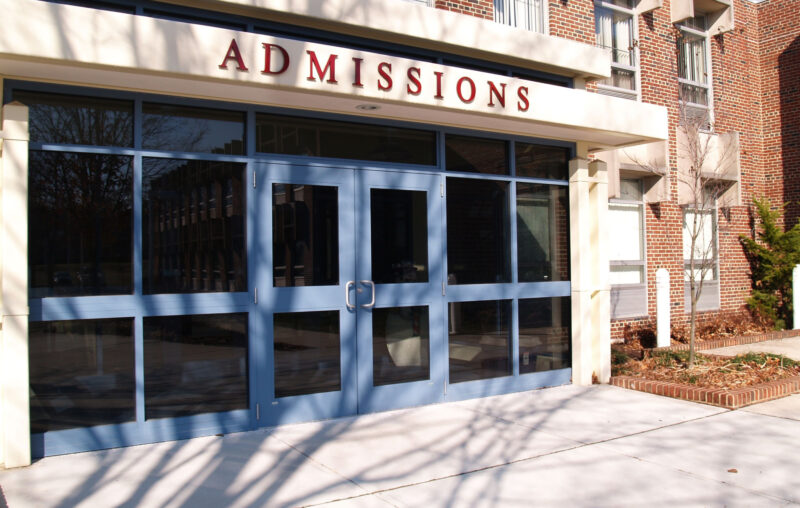A Strike at Affirmative Action Solidifies Right to an Education

Was Students For Fair Admissions v. Harvard (SFFA) the win conservatives and many others assume it is?
Before celebrating too much, we might pause to consider that the case didn’t really bring an end to race-based admissions. Even worse, it further solidified in constitutional law and public opinion the disastrous progressive idea that everyone has a positive right to an education.
The fundamental question in SFFA, according to Chief Justice John Roberts, is “whether the admissions systems used by Harvard College and the University of North Carolina…are lawful under the Equal Protection Clause of the Fourteenth Amendment.” A majority of conservative Supreme Court Justices answered: They’re not.
But the controversy really isn’t about the Equal Protection Clause. Or, it shouldn’t be.
The text of the Equal Protection Clause is simple: “No state shall deny to any person within its jurisdiction the equal protection of the laws.” The original purpose of the Equal Protection Clause was simple: To force states, in the wake of the Civil War, to protect the civil and natural rights of former slaves who became free under the 13th Amendment.
Yet, Harvard is not a state. Nor is UNC. Both are schools. Neither is a government. Neither has power to pass or enforce laws. Neither has any “jurisdiction” in which to offer “equal protection of the laws.”
The admissions process at Harvard and other schools becomes a constitutional question only if one accepts a long line of case law in which the Supreme Court, by torturing logic and language, has redefined “equal protection” to mean “equal treatment of the laws.”
Equal protection implies protecting equally what each citizen already has—natural, negative rights, such as life, liberty, and property—by punishing those who violate or threaten those rights.
Equal treatment, however, opens the door to positive rights, i.e. rightful claims to government services, subsidies, entitlements, and other spending programs (including education). If the government is going to distribute loot to some citizens, equal treatment requires distributing loot to all citizens without discrimination on the basis of race and an ever-growing list of other criteria.
Further, if the government funds a private university with subsidies and grants, that private university effectively becomes a public university subject to all federal laws, regulations, and oversight by the Supreme Court, including the Court’s equal treatment doctrine. (This is also enshrined in federal statutory law by Title VI of the 1964 Civil Rights Act.)
That points to some fundamental questions: Do Americans have a right to an education? Does the government have an obligation to spend other people’s money to supply that right by providing education?
In the recent SFFA case, Chief Justice Roberts answered those questions by quoting approvingly from Chief Justice Warren’s opinion in Brown v. Board (1954) and affirming the progressive view that “the right to a public education must be made available to all on equal terms.”
You might want to read that again.
These two Republican-nominated Chief Justices—Warren and Roberts—agree: Everyone has a right to an education, and the government has an obligation to fund and provide it, whether wholly or in part. That’s how an admissions process at a private college becomes a disputed constitutional question.
A Court decision firming up the right to an education is no victory for liberty. Few ideas have harmed the cause of individual liberty within a self-governing constitutional republic more than the notion that everyone has a right to an education and corresponding government obligation to provide it.
That idea has fueled the spread of miserable government schools, controlled by public employee unions, that don’t teach students how to read or add because they’re more focused on political fads.
Institutions of higher education are no better. Except for a very rare few, virtually all colleges and universities in the United States receive all kinds of government funding because, again, everyone allegedly has a right to an education. Those institutions have become citadels of philosophic nihilism and the politics of progressive central planning where victimhood is praised, virtue is mocked, and those who insist there is no truth are at a loss to explain the purpose of education.
For those opposed to race-based admissions in college and university citadels of nihilism, SFFA is a small victory. At the same time, for those who want to continue judging by skin color, the case is not much of a setback.
“[N]othing in this opinion,” Chief Justice Roberts reminded all academic race hustlers, “should be construed as prohibiting universities from considering an applicant’s discussion of how race affected his or her life, be it through discrimination, inspiration, or otherwise.” That’s basically permission for university admissions bureaucrats to find work-arounds and continue admitting students based on skin color.
In our modern progressive America, where freedom is nearly entirely eclipsed by regulatory control, there aren’t many reasons for liberty lovers to celebrate. Maybe that is why so many are quick to cheer for SFFA, even though the problems with the decision outweigh its virtues?










